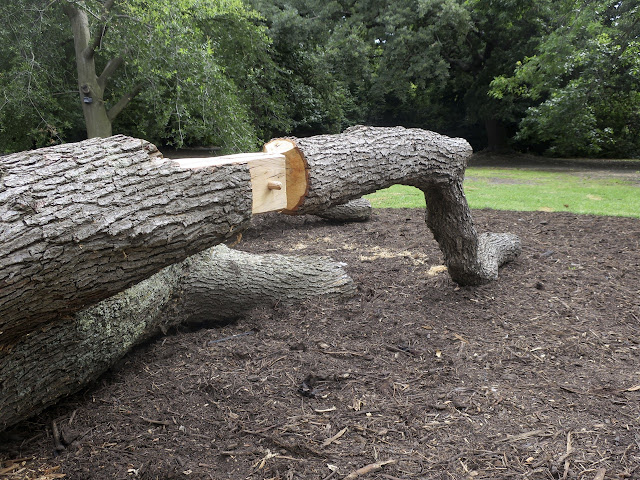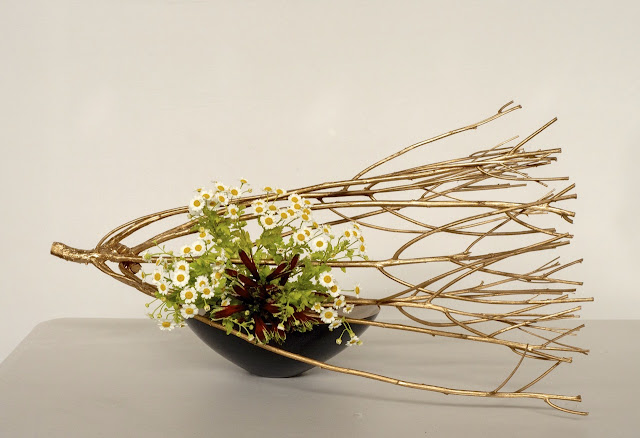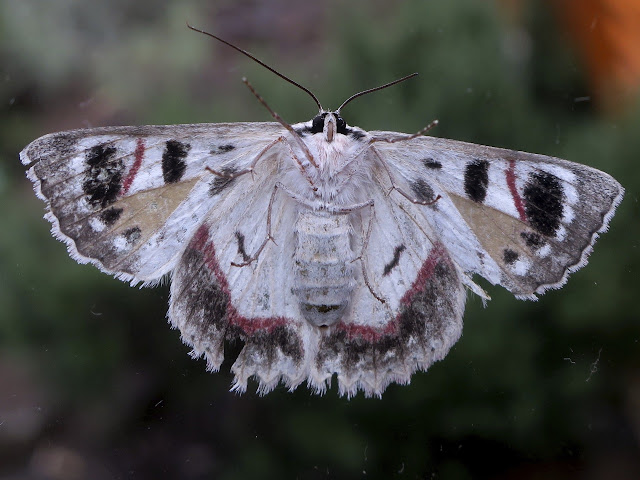It is the day after Boxing Day as I write this, and Christmas Day has been and gone for 2020. Before next weekend arrives we will be in 2021. I would like to wish you a happy, healthy and safe New Year. My wish is also for better things for the whole world. From the perspective of Australia, we look with concern at the circumstances of much of the rest of the world, particularly with regard to the Covid-19 pandemic.
This year I made a Christmas tree that looks rather Baroque. I had some large Monstera Deliciosa leaves drying in the garage which had developed some interesting curving lines and I realised that they would be large enough to cover my wire-mesh cone. Because they did not sit perfectly on the surface I added some red and gold baubles both underneath and outside the leaves. I first undercoated the leaves with some red lacquer spray, some of which I left showing on the tips when I added the top coat of gold.
The photographs in last week's posting, of the fallen White Oak, Quercus alba, in the Royal Botanic Gardens Melbourne were all taken through chain mesh fencing. This week I have been able to get up close as the fence has now been removed. Below are a number of images showing details of the carving and interlocking of some branches.
This joint looks more playful...
...given that the pieces cannot move.
And the same is true here.
On Christmas Eve I visited a longstanding Sogetsu Branch member, friend and mentor, Kath Dacy. When I arrived she was surrounded by Christmas gifts of flowers and wondering where to start.
My two leaf, two flower Ikebana took much more fussing to create. Two Arum lily leaves, one just peeping above the rim of the vessel and two Alstroemeria psittacina. This was my contribution for the Christmas lunch gathering at our place. We were joined by some of Laurie's siblings and one of his nephews.
The porcelain vessel is by the Victorian ceramic artist Alistair Whyte.
Greetings from Christopher
27th December 2020
* I apologise for the poor quality of the photo of Kath's ikebana. The light level was low and I used my elderly mobile phone's camera.











































